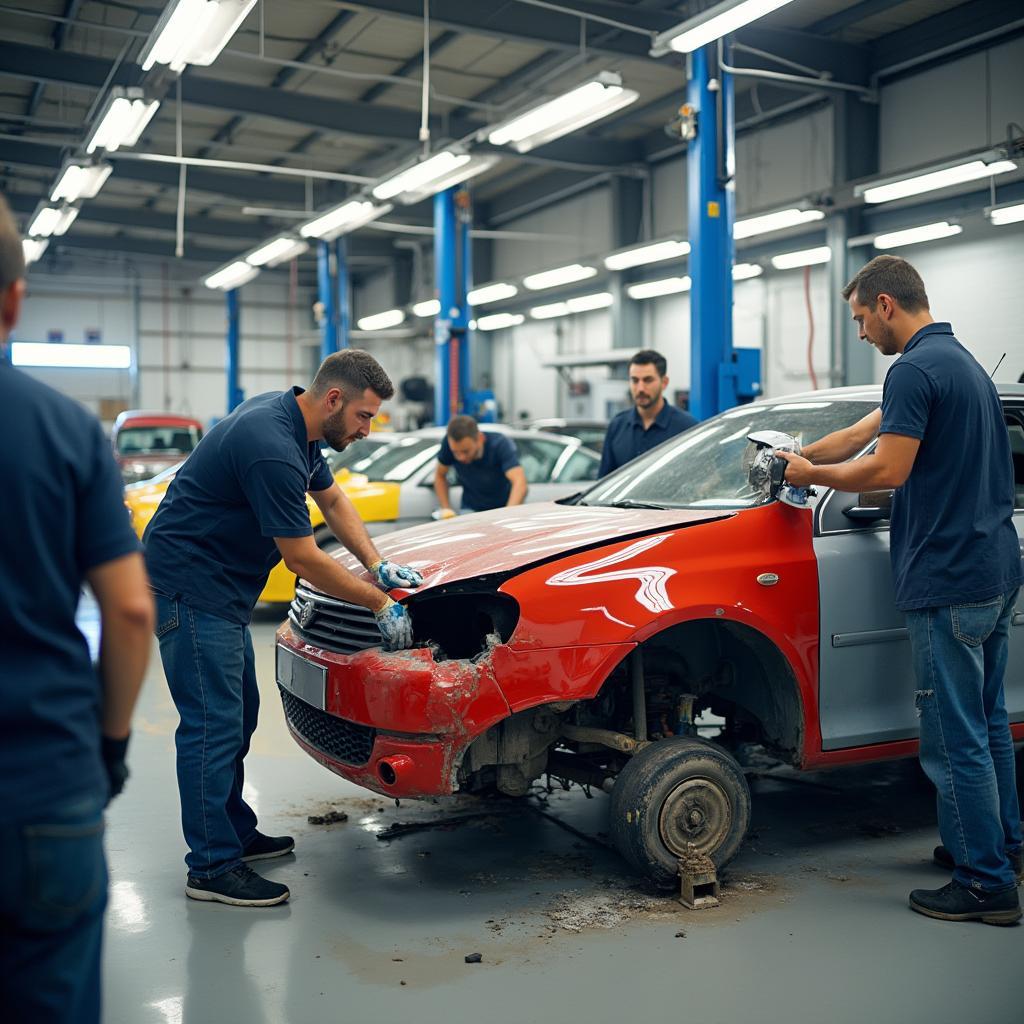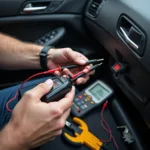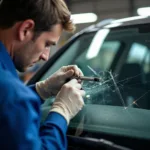From minor dents to major collision damage, car body work repairs are an essential part of restoring your vehicle to its former glory. Whether you’re dealing with the aftermath of an accident or simply want to erase the wear and tear of daily driving, understanding the ins and outs of car body work repairs can save you time, money, and unnecessary stress. This comprehensive guide will provide you with all the information you need to navigate the world of car body work repairs with confidence.
Understanding the Basics of Car Body Work Repairs
Car body work repairs encompass a wide range of services designed to address damage, imperfections, and structural issues affecting your vehicle’s exterior. From minor scratches and dents to major frame straightening and panel replacements, qualified technicians use specialized tools and techniques to restore your car’s appearance and safety.
Common Types of Car Body Work Repairs
Dent Repair
Dents, whether caused by hail, shopping carts, or minor collisions, can detract from your car’s appearance. Modern dent repair techniques, such as paintless dent repair (PDR), can often remove minor dents without the need for repainting.
Scratch Repair
Scratches can vary in severity from clear coat damage to deep gouges that expose the metal underneath. Repairing scratches typically involves sanding, filling, and repainting the affected area to create a seamless finish.
Bumper Repair
Bumpers are designed to absorb minor impacts, but they can still sustain cracks, dents, and scratches. Depending on the extent of the damage, bumper repairs may involve plastic welding, filling, sanding, and repainting.
Panel Replacement
In cases of significant damage, such as a collision, panel replacement may be necessary. This involves removing the damaged panel and welding in a new one, ensuring proper alignment and structural integrity.
Frame Straightening
Frame damage can compromise your vehicle’s safety and handling. Frame straightening involves using hydraulic equipment to pull the frame back into its correct alignment.
Paintwork
Whether it’s a single panel or a full-body respray, paintwork is often the final stage of car body work repairs. Professional paint jobs involve color matching, priming, painting, and clear coating to achieve a factory-like finish.
Choosing the Right Car Body Repair Shop
Selecting a reputable and qualified car body repair shop is crucial for ensuring high-quality repairs and a positive experience.
Here are some factors to consider when choosing a shop:
- Certifications and affiliations: Look for shops that are certified by reputable organizations, such as I-CAR or ASE.
- Experience and expertise: Choose a shop with a proven track record of handling the specific type of repairs your car needs.
- Customer reviews and testimonials: Read online reviews and ask for referrals to get a sense of the shop’s reputation.
- Warranty: Inquire about the shop’s warranty policy on their work and the parts they use.
Tips for Getting the Best Results
- Get multiple estimates: Don’t settle for the first estimate you receive. Getting quotes from multiple shops will give you a better understanding of the average cost and allow you to compare services.
- Ask questions: Don’t hesitate to ask questions about the repair process, the parts used, and the estimated timeline.
- Document the damage: Take photos of the damage before taking your car to the shop.
- Review the work before paying: Before making the final payment, carefully inspect the repairs to ensure you are satisfied with the quality of the work.
Conclusion
Car body work repairs are an inevitable part of vehicle ownership. By understanding the basics, choosing a reputable repair shop, and following these tips, you can ensure that your car is restored to its former glory while minimizing stress and maximizing value.



